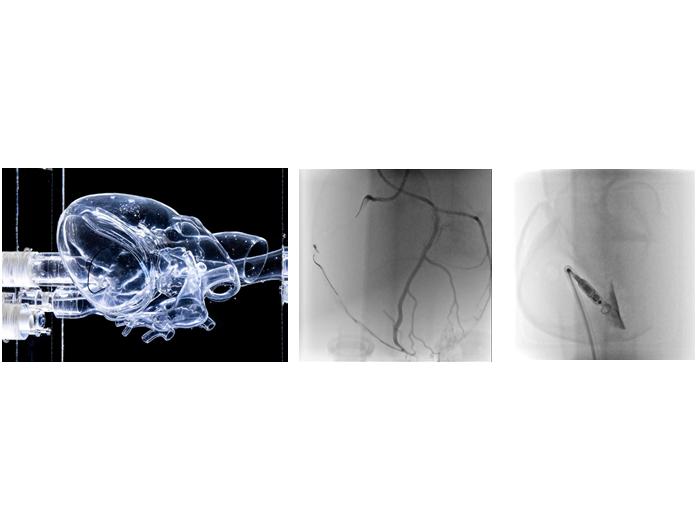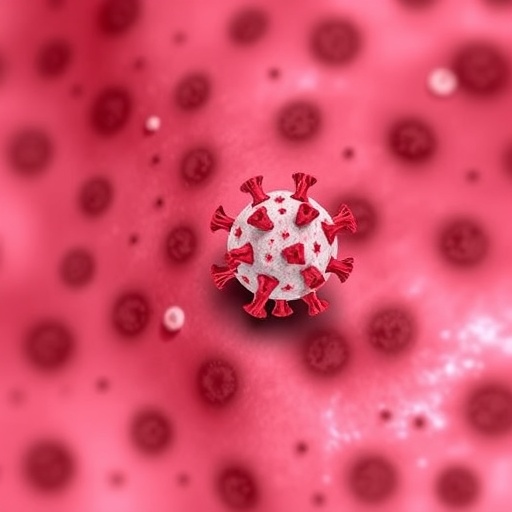
Credit: Osaka University
HEARTROID PROJECT
HEARTROID PROJECT and the TTDD lab at MIT today announced a creative partnership. HEARTROID® platform, a catheter-based simulator, will participate in TTDD lab’s effort of validating device performance with its pulsatile and anatomically precise 3D printed models, helping accelerate surgical device development from concept to testing.
Statement from HEARTROID PROJECT:
“HEARTROID® will assist the scientific research community’s quest to push forward with new and innovative catheter-based devices that ultimately help improve patient outcome. We look forward to deploying our 3D expertise through HEARTROID® to assist TTDD lab at MIT to design novel medical devices that seamlessly integrate with and enhance native biological functions.”
Statement from MIT:
“We are thrilled to be partnering with HEARTROID PROJECT to develop and validate innovative devices with the potential for significant clinical impact. Comprehensive testing and evaluation of cardiovascular device function and performance is critical for successful regulatory approval and clinical implementation. We chose the HEARTROID® platform for its ability to recapitulate multiple human patient-specific anatomies, and incorporate them seamlessly into a synthetic cardiac benchtop model.”
About HEARTROID PROJECT:
“HEARTROID PROJECT” was started in 2013 by Osaka University Graduate School of Medicine Department of Cardiovascular Medicine, JMC Corporation and Fuyo Corporation, aiming for developing a training system with a heart model and a pulsatile pump for interventional cardiologists and medical students. Our project motto is “Contribute to safe cardiac catheter operations for the patients all over the world through developing catheter simulator.” This project has been supported by Japan Agency for Medical Research and Development (AMED).
About HEARTROID®, created by HEARTROID PROJECT:
HEARTROID® offers clear angiographic images under X-ray fluoroscopy in the cath lab, with a short prep time. From full-scale training based on X-ray fluoroscopy practice to image training on a desk, physicians and healthcare professionals can easily practice catheter operation in any environment. The specialized transparent 3D printed heart works seamlessly under X-ray fluoroscopy, as well as other imaging techniques commonly used in the cath lab. Biting anatomically precise and pulsatile 3D models, HEARTROID® is also used extensively by leading medical device developers for the purpose of R&D, testing, and quality control. HEARTROID® has been created through HEARTROID PROJECT and placed on the market in 2015 from JMC Corporation, and so far available in 15 countries around the world. It is not a “medical device” under the “Act on Assurance of Safety.”
About the TTDD lab at MIT
Research in the TTDD lab at MIT aims to design and develop implantable medical devices that augment or assist native function. We borrow principles from nature to design implantable, biomimetic therapeutic devices. Research is broadly categorized into three areas (i) mechanical assist and repair devices, (ii) biomaterial and therapy delivery devices and (iii) enhanced preclinical and computational test model development. Our vision is to lead a paradigm shift in the approach to supporting and repairing organs with intrinsic mechanical function (exemplified by the cardiac and respiratory systems) by designing solutions which fundamentally adhere to, and integrate the technology into, the inherent complex biomechanics of the tissue, to ultimately improve the quality of life for those with dysfunctional organs as a result of disease, congenital defects, or injury.
(Contact information about this project)
Department of Cardiovascular Medicine, Osaka University Graduate School of Medicine
Yasushi Sakata M.D., Ph.D.
Global Center for Medical Engineering and Informatics (MEI center)
Keita Okayama M.D., Ph.D.
TEL: +81-6-6879-3640 FAX: +81-6-6879-3639
[email protected]
About Osaka University
Osaka University was founded in 1931 as one of the seven imperial universities of Japan and is now one of Japan’s leading comprehensive universities with a broad disciplinary spectrum. This strength is coupled with a singular drive for innovation that extends throughout the scientific process, from fundamental research to the creation of applied technology with positive economic impacts. Its commitment to innovation has been recognized in Japan and around the world, being named Japan’s most innovative university in 2015 (Reuters 2015 Top 100) and one of the most innovative institutions in the world in 2017 (Innovative Universities and the Nature Index Innovation 2017). Now, Osaka University is leveraging its role as a Designated National University Corporation selected by the Ministry of Education, Culture, Sports, Science and Technology to contribute to innovation for human welfare, sustainable development of society, and social transformation.
Website: https:/
###
Media Contact
Keita Okayama
[email protected]
Original Source
https:/




